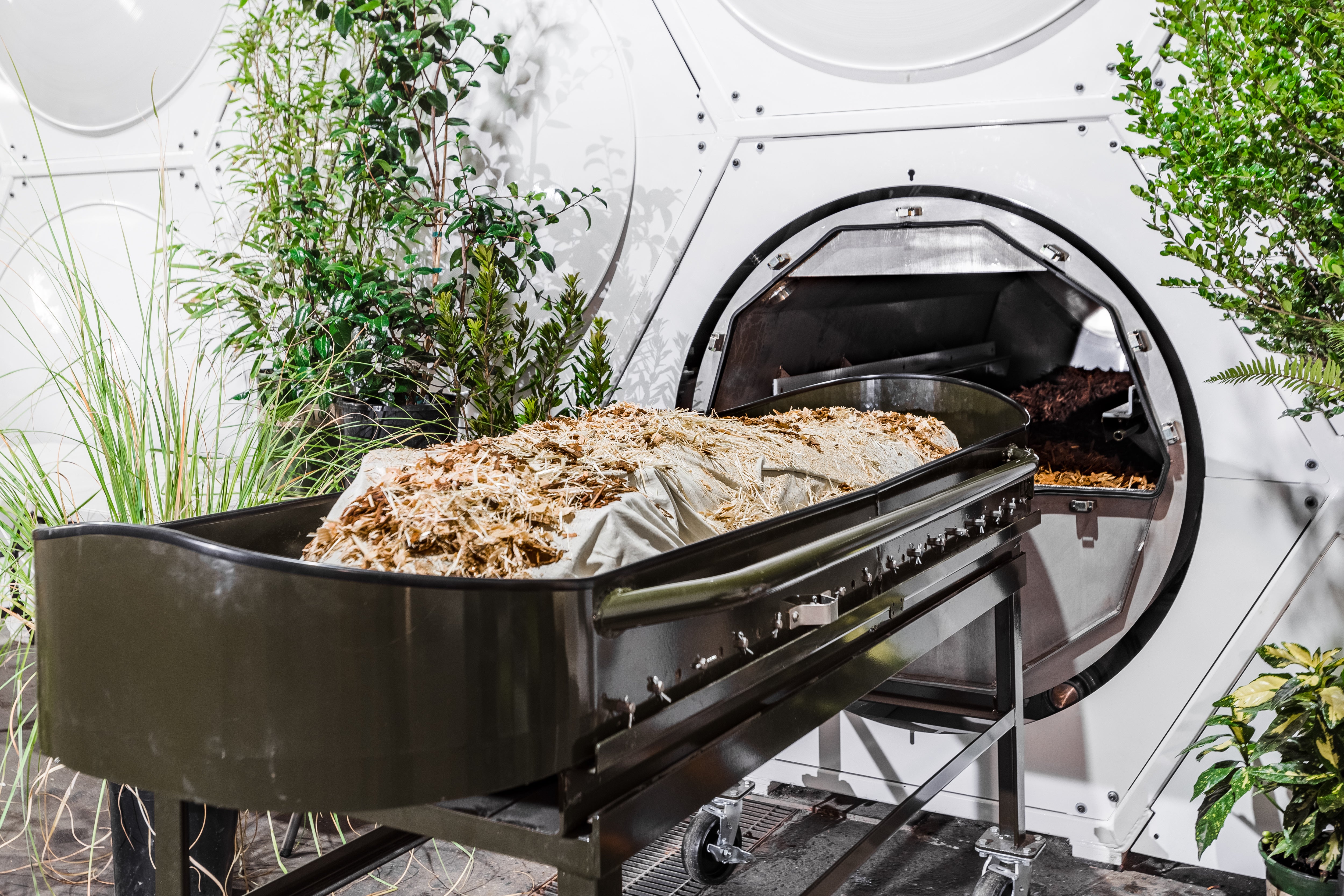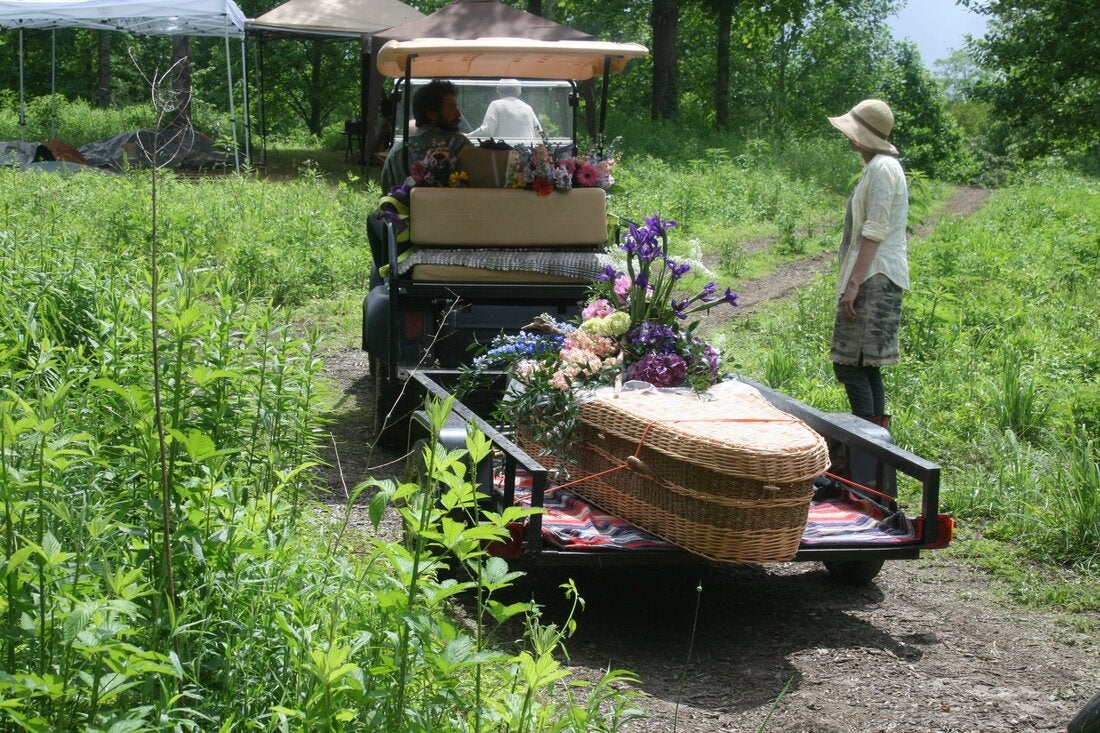How to become human compost (and other ways to be environmentally-friendly, post-mortem)
Changing values and advances in technology have led to a burgeoning “green” death industry from natural and conservation burials to water cremation and human composting, Louise Boyle writes


Your support helps us to tell the story
From reproductive rights to climate change to Big Tech, The Independent is on the ground when the story is developing. Whether it's investigating the financials of Elon Musk's pro-Trump PAC or producing our latest documentary, 'The A Word', which shines a light on the American women fighting for reproductive rights, we know how important it is to parse out the facts from the messaging.
At such a critical moment in US history, we need reporters on the ground. Your donation allows us to keep sending journalists to speak to both sides of the story.
The Independent is trusted by Americans across the entire political spectrum. And unlike many other quality news outlets, we choose not to lock Americans out of our reporting and analysis with paywalls. We believe quality journalism should be available to everyone, paid for by those who can afford it.
Your support makes all the difference.New Yorkers, intensely proud of that moniker though they are, will likely be forced to relinquish it once dead.
In a city where space is at a premium, two-thirds of those who opt for a burial are ultimately relocated beyond the five boroughs, according to Columbia University’s DeathLAB, a research and design space aimed at “changing how people think about death”.
The project is part of a growing movement of academics, artists, designers, funeral home owners, and environmentalists reconsidering how to navigate one of life’s few universal truths: that it ends.
With cities becoming ever more crowded, and spiralling climate and environmental concerns worldwide, some are seeking alternative, more environmentally-conscious paths in death.
Over the past century or so, the funeral industry in the United States and other western countries has become increasingly sanitized and industrialized.
For many burials, the body is embalmed by being drained of fluids and injected with formaldehyde (a chemical that has been linked to several types of cancer.) An estimated 800,000 gallons of embalming fluid is used in the US annually, according to National Geographic, enough to cover a football field by two feet. Bodies are also typically dressed, with make-up and hair products applied.
Traditional burials can have a significant financial and environmental footprint. The average cost of a US funeral is $7,848, according to the National Funeral Directors Association and a lot of that expense goes on caskets which use 30 million feet of hardwood (some of rare tropical varieties), 90,000 tons of steel and 2,700 tons of copper and bronze annually, Columbia’s DeathLAB reports. There’s also vast amounts of carbon-intensive materials for burial vaults -- some 1.6 million tons of concrete and 14,000 tons of steel.

Even cremation, less expensive and using fewer materials, is not without environmental impact. Cremations release mercury, carbon monoxide and sulfur dioxide into the atmosphere and require an average 28 gallons of fuel (similar to a tank of gas in an SUV). Cremating a single body is equivalent to the average home’s monthly household energy consumption, Columbia’s researchers found.
Traditional funeral practices are so ingrained in society that we assume this is how death has to be, said Caitlin Doughty, a licensed mortician, author and owner of Clarity Funerals and Cremation in Los Angeles, who founded The Order of the Good Death, a non-profit for funeral reform.
“It didn’t go that way 100-150 years ago, and it does not have to go that way in the future,’ she told The Independent.
Over the past few decades, changing values and advances in technology have led to a burgeoning sustainable death space: from natural and conservation burials to water cremation and human composting.
“I’m interested in how we move away from the traditional funeral industry and start to see a lot more family involvement, environmentally-friendly options and better financial options,” Ms Doughty said. “Things that make people feel more connected and comfortable with the idea of their eventual demise.”
In December, New York became the sixth US state to legalize human composting, or “Natural Organic Reduction” as it’s officially titled.
Human composting was invented by Katrina Spade, who came up with the idea while researching the funeral industry as a graduate student in architecture.
Modelled on how farmers dispose of livestock, the human composting process has been tested and refined over the past ten years.
“My favorite way to think about composting is like when you walk in a forest,” Ms Spade told The Independent. “Dig down about six inches, there are pine needles, sticks, leaves and chipmunks, and all of that dead, organic material is decomposing to create topsoil. What we do is mimic that process inside of our vessel system.”
It works by laying a body on a bed of wood chips, alfalfa and straw and then keeping it in a temperature and moisture-controlled vessel to accelerate natural decomposition. After four to six weeks, two wheelbarrows’ worth of soil is left.

Ms Spade founded Recompose, the world’s first human composting company, in 2017. Since then, more than 200 people from all over the US have chosen to have their bodies composted.
“Beyond the environmentalists who love this idea, what surprised me was seeing a strong libertarian bent towards human composting, where it’s about choice and deciding for one’s own self what to do with our bodies when we die and not being stuck with a couple of options because the industry says,” Ms Spade said.
She says “it’s been interesting to see a wide range of people,” adding that “even though the Catholic church is technically opposed to the idea, conceptually I’ve heard from lots of Catholics that this is what they want for their bodies when they die.”
Astonishingly, around 25 per cent of those pre-paying for the process are under the age of 49, Ms Spade says.
“Most people aren’t pre-planning for their future funeral at 20, 30, 40,” she explained. “But I think this feels like joining a movement.”
The interest may be driven by younger people’s focus on reining in the climate crisis, which will require dramatic cuts to emissions across all parts of society.
Ms Spade points out the carbon footprints of both conventional burial and cremation, not to mention the casket, headstone, and upkeep of the cemetery.
“The nice thing about human composting is you avoid those emissions and you’re also sequestering carbon in the process into the soil,” she added. “Over a metric ton of carbon is saved per person who chooses to be composted versus cremated or buried.”
Ms Spade regards human composting as the urban equivalent of natural, or green, burials which involve graves dug by hand, and bodies placed straight in the ground with no more than a biodegradable casket or burial shroud.
“It’s a beautiful concept but still takes land and I think best for rural settings. Recompose was developed as an urban equivalent to natural burial,” she said. “[It’s] a way for the billions of us that live in cities to care for our bodies in an ecological manner, and use the nutrients on plants and trees.”

While the laws around human composting are still being developed, the rules around where the soil can be spread typically follow what is allowed for cremated ashes. Some people choose to donate their soil to forest restoration projects, conservation areas or be returned to home gardens. “If you want to be rose bushes because you loved rose bushes, that would be a beautiful place to go,” Ms Doughty said.
Human composting is not the only way to give your body back to the planet. In a conservation burial, a body or cremated remains are interred in places to protect them from future development. There are more than 300 natural burial cemeteries in the US, and a handful work with land trust organizations, according to the Conservation Burial Alliance.
“I call it chaining yourself to a tree post-mortem,” Ms Doughty said.
At Campo de Estrellas, a conservation cemetery in East Texas, both human and pet remains are interred across nine acres of former cattle pasture that is being rewilded. Caskets and shrouds must be biodegradable, and all flowers and plants that mark a grave site must be native species to Texas.
At Prairie Creek Conservation cemetery in Gainsville, Florida, remains are buried among forests and meadows interwoven with trails where people hike, cycle and ride horses.
“It’s a living place, and a beautiful place to be,” Ms Doughty said. “I think what these options come down to is an overriding impulse for people to, not only make their own choices for their dead body, but also to have a synergy or connection with the land. This humbleness of realizing -- I’ve taken a lot from the land as a human throughout my life, and now is finally my opportunity to give back,” she added.
An eco-friendly alternative to cremation is the process of aquamation, or water cremation, which is legal in 18 states, according to Valerie Keene, an attorney specializing in estate planning.
A body is placed in an airtight capsule with alkalized water and is broken down over about eight hours. The remaining ashes are then dried and returned to the family. Aquamation doesn’t involve burning fossil fuels and has more than 90 per cent energy savings when compared to flame-based cremation, according to experts.
Archbishop Desmond Tutu, the legendary anti-apartheid campaigner, chose aquamation and a modest funeral when he died in South Africa in 2021. The religious leader had used his final years to urge world leaders to take more urgent action on the climate crisis.
While there’s no doubt that environmentally-friendly funerals create less emissions and use fewer resources than traditional burials and cremation, the more striking impact is in the shift in mindset to make these choices, Ms Doughty says.
“It’s accepting that the human body is organic material, that's not better than any other animal or any other piece of organic material,” she said.
“It’s growing new life from our dead bodies as opposed to being put in a box [and] locked away in a ‘forever grave’. That's a huge mental shift in how we live and die, knowing this is possible.”



Join our commenting forum
Join thought-provoking conversations, follow other Independent readers and see their replies
Comments